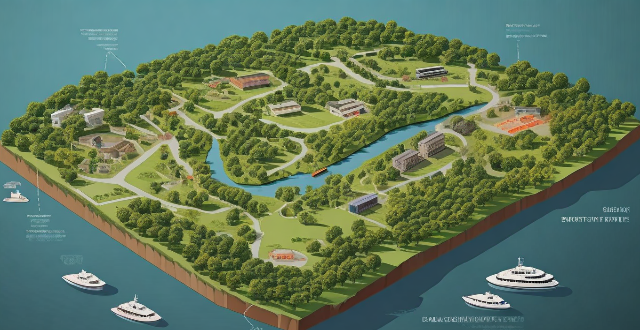Integrating EPAs with other conservation strategies is crucial for their long-term viability and effectiveness. This involves developing comprehensive landscape approaches, incorporating community-based conservation, enhancing legal frameworks, promoting sustainable development practices, conducting regular research and monitoring, and implementing education and awareness programs. These measures ensure that conservation efforts extend beyond the boundaries of EPAs and into the broader ecosystem, involving local communities, addressing human activities, and fostering a culture of environmental stewardship.

Integrating Ecological Protection Areas with Other Conservation Strategies
Ecological protection areas (EPAs) are designated zones where the primary goal is to preserve and maintain natural ecosystems, biodiversity, and ecological processes. These areas play a crucial role in conserving wildlife habitats and mitigating environmental degradation. To maximize their effectiveness, it's essential to integrate EPAs with other conservation strategies. Here's how:
1. Developing Comprehensive Landscape Approaches
Integrating EPAs into comprehensive landscape approaches involves considering the entire ecosystem, including human activities, rather than focusing solely on isolated protected areas. This approach ensures that conservation efforts extend beyond the boundaries of the EPA and into the surrounding landscapes.
- Connectivity: Establish corridors between EPAs to facilitate the movement of species and gene flow.
- Buffer Zones: Create buffer zones around EPAs to reduce edge effects and protect against external threats like invasive species or pollution.
2. Incorporating Community-Based Conservation
Community involvement is vital for the success of EPAs. By involving local communities in conservation efforts, you not only gain their support but also leverage their knowledge of the local ecosystem.
- Co-management: Implement co-management strategies where local communities participate in decision-making processes.
- Ecotourism: Promote ecotourism as a means of generating income for local communities while educating visitors about conservation.
3. Enhancing Legal Frameworks and Policies
Strong legal frameworks and policies are necessary to protect EPAs from illegal activities such as poaching, deforestation, and mining.
- Enforcement: Strengthen law enforcement within and around EPAs to deter illegal activities.
- Collaboration: Collaborate with international organizations and NGOs to advocate for stronger global conservation policies.
4. Promoting Sustainable Development Practices
Sustainable development practices can help minimize the negative impacts of human activities on EPAs.
- Sustainable Agriculture: Encourage sustainable farming practices that reduce reliance on harmful chemicals and promote biodiversity.
- Clean Energy: Promote the use of clean energy sources to reduce carbon emissions and mitigate climate change impacts on EPAs.
5. Research and Monitoring
Regular research and monitoring are essential for understanding the effectiveness of conservation strategies and making necessary adjustments.
- Biodiversity Assessments: Conduct regular biodiversity assessments to track changes in species populations and ecosystem health.
- Threat Analysis: Analyze threats to EPAs, such as climate change or invasive species, and develop targeted management plans.
6. Education and Awareness Programs
Educating the public about the importance of EPAs and conservation can foster a culture of environmental stewardship.
- Outreach Programs: Organize outreach programs in schools and communities to raise awareness about EPAs and conservation issues.
- Citizen Science: Encourage citizen science projects where members of the public can contribute to data collection and monitoring efforts.
In conclusion, integrating ecological protection areas with other conservation strategies requires a multifaceted approach that addresses both ecological needs and human activities. By adopting these strategies, we can ensure the long-term viability of EPAs and contribute to global conservation efforts.